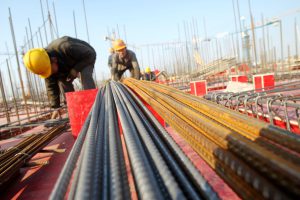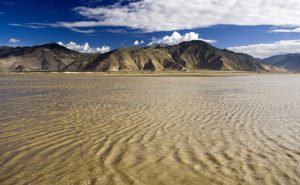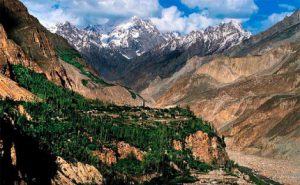Pan Jiahua (PJ): There’s been a lot of success, we’ve innovated, and there’s been a lot we’ve had to learn. Overall, there have been both successes and failures – but more success.
We should recognise the benefits this period of urbanisation has brought.
First, urbanisation has been driven by industrialisation, and that’s meant faster economic development and growth, and rising incomes. Urbanisation has allowed for qualitative improvement in the Chinese economy, something that agriculture or the traditional service industry could not have provided.
Second, China has been transformed by huge amounts of new infrastructure: urban infrastructure such as water supplies, waste water treatment, roads and power; regional infrastructure such as airports, ports and expressways; social goods such as schools and hospitals; communications infrastructure such as fibre optic and other networks; as well as commercial and environmental infrastructure.
Third, urbanisation gathers resources together, allowing for greater efficiency, better competitiveness, and economies of scale. Without urbanisation China’s environment might be in an even worse state. After urbanisation Beijing’s economy is tens of times larger than before – despite the fact that there hasn’t been any increase in total water resources available.
Fourth, lifestyles have seen huge changes. That new infrastructure has allowed large numbers of people to leave farming for better lives in the cities.
Five, urbanisation has made for a more open China. In the past many Chinese cities were effectively cut off from the outside world. Today almost every provincial capital has international flights, whereas 30 years ago Beijing was China’s only international airport.
Of course, a high price has been paid for this progress.
First, there has been a social cost. The generations of children and elderly left behind in villages by migrant workers since the 1980s have a bleak existence. Discrimination, unequal access to social services, the income gap – the benefits of urbanisation have not accrued to all those who have contributed to it, and the vulnerable have borne more of the costs.
Second is the pollution and destruction of the environment. Now we have water pollution, air pollution, pollution from heavy metals, damaged ecosystems – none of these can be dealt with quickly. Four hundred of China’s six hundred cities lack water.
Third, we’ve damaged and become disconnected from our history and culture. We knock things down on a whim and relocate everyone – all our cities look the same, there’s nothing unique about them.
CD: What unique characteristics has urbanisation in China had?
PJ: First, it has been driven by industrialisation, which has meant more rapid and wider-scale urbanisation. We set up lots of zones: industrial zones, high-tech zones, development zones, Special Economic Zones… Shenzhen originally had a population of 200,000 – now it’s 10 million. A scarcity of labour meant people moved to the cities to fill those jobs. It’s hard to imagine the way we created those zones happening anywhere else – it was entirely normal to create new zones of 3,000 or 5,000 mu.
Second, China’s system of distinguishing urban and rural residents reduced the costs of urbanisation. Migrant workers from rural areas were not eligible for social services, and so money which should have been spent on them was saved. There are historical reasons for this system, and it did reduce the costs of urbanisation – but it also had disadvantages, such as creating discrimination.
Third, China’s strong government meant problems which blight other cities were avoided. We have no slums as we were able to force through redevelopment of the older parts of our cities, public order was strictly enforced, and when necessary factories were shut down to improve the environment. Other countries can’t do that.
CD: China went through a stage where industrialisation was happening faster than urbanisation, but now urbanisation is the driver. How would you divide China’s urbanisation into stages, in order to better understand the current situation and our challenges?
PJ: The first stage is a natural process that has occurred since feudal times, as shopkeepers and tradesmen cluster together.
The second stage is when industrialisation and urbanisation interact, during labour-intensive industrialisation. In the 20 years of reform and opening up prior to 1998, industrialisation was powered by the expansion of labour-intensive sectors. Factories were built in cities, and workers moved to the cities for work. Comparatively little land or financial input was needed, and there wasn’t much construction of infrastructure. Urbanisation and industrialisation went hand in hand, and urbanisation wasn’t particularly fast. During that period the issues of urbanisation we argue about today weren’t a problem. We could call this the early stage of industrialisation.
Then came industrialisation characterised by expansion of the heavy chemical and resource-intensive sectors. After 1998 capital replaced labour as the driving force, and capital requires more land. This lead to the various types of zones I mentioned, and industrialisation proceeded more quickly than urbanisation.
China is now in a fourth stage, late industrialisation. This is characterised by shifts between sectors, with expansion slowing, more rapid population movement to the cities, assimilation of the rapid expansion of earlier stages, rapid growth of the service sector, a shift to value-added industries and restructuring.
The fifth stage, post-industrialisation, sees the industrial sector stabilise and then contract, further efficiency improvements, large service sector expansion, and urbanisation far outstripping industrialisation.
CD: So what’s new about the “new urbanisation”?
PJ: It’s about how you change – not by expanding, but by improving, shifting from heavy industry to light industry, from low added-value to high added-value, from depending on investment and overseas demand, to relying on domestic demand.
How are we going to generate domestic demand if we have huge numbers of people living in factory dormitories? We need to move them into houses to create consumer demand. If they prefer to save up their wages and go back to their villages to build a house and retire rather than live in the cities, then our social development and social security are failing.
The problem now is that resource monopolies are enjoying huge profits and are tied up with political power. But the changes in urbanisation bring about social benefits, and legislation, openness and transparency puts interest groups under pressure, while social benefits become more prominent. When some individual interests are too big, social interests may suffer.






